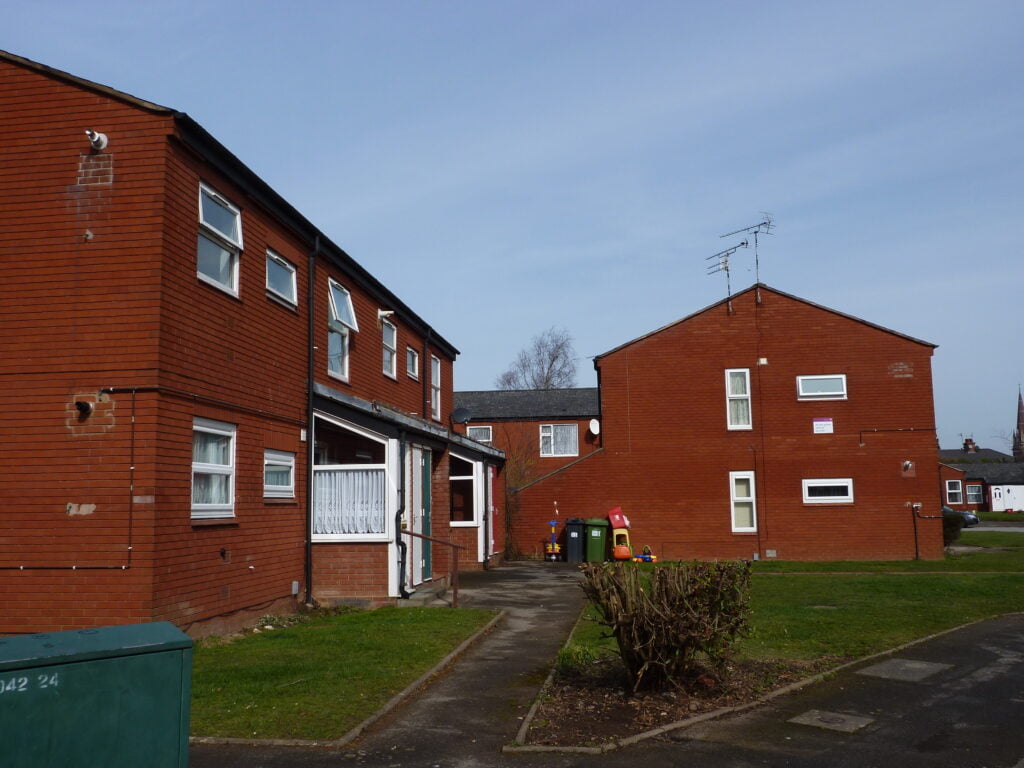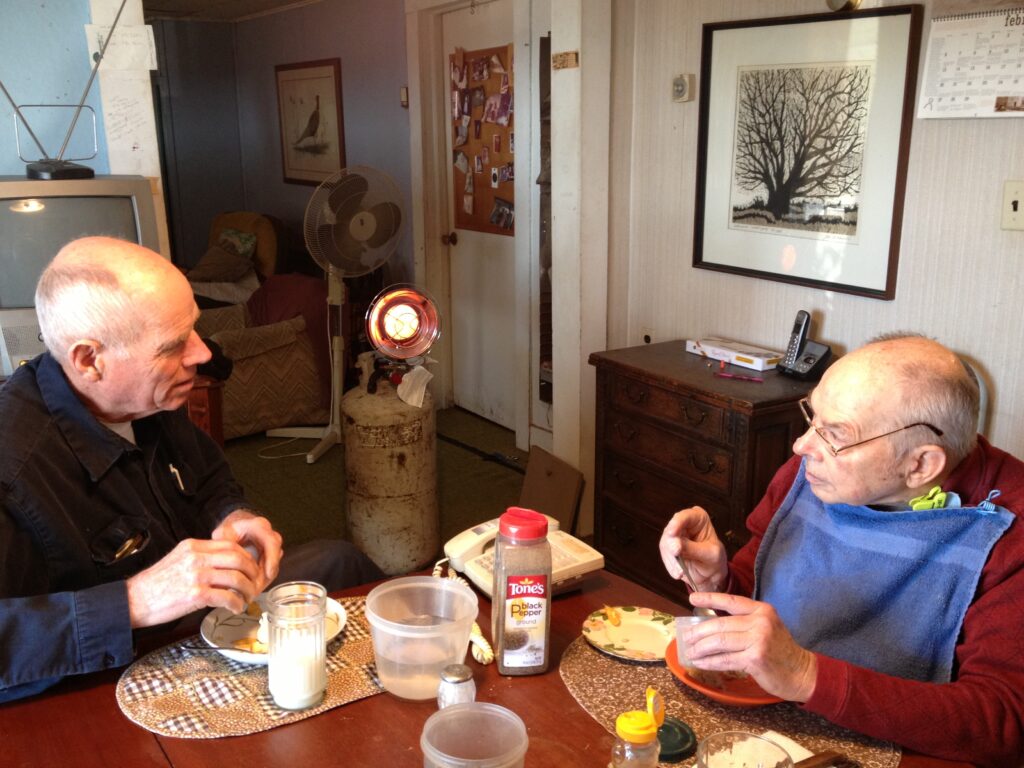The process of allocating housing to the homeless in the UK involves a calculus in which the emotional concept of ‘home’ does not feature.
 Social housing in the UK is allocated on a fast, low-cost basis: Lydia_Shiningbrightly, Flickr. CC BY 2.0
Social housing in the UK is allocated on a fast, low-cost basis: Lydia_Shiningbrightly, Flickr. CC BY 2.0
The process of allocating housing to the homeless in the UK involves a calculus in which the emotional concept of ‘home’ does not feature.
When Jill* was assigned government housing after years of domestic abuse and months in women’s shelters, she was thrilled. She was grateful for a roof over her head – a place to call home as she started the long journey of piecing her life back together.
Gratitude is one of many emotions a person might feel when provided with social housing. The emotional dimensions of housing are not part of the calculus behind housing allocation in England, but a more ‘emotional’ approach to housing might have benefits for society, and long-term cost savings for governments.
English households already on the edge in 2022 are more likely to fall into homelessness. A chronic shortage of housing, decades of failure to build social housing, the steady creep of amateur private landlords charging market rents and the spiralling cost-of-living crisis means households are being pushed to the limit. As of September 2021, a total of 121,680 children were housed in temporary accommodation, resulting in psychological harm and ongoing challenges.
People unfamiliar with the world of social housing in England may imagine that citizens who need long-term housing, because of homelessness, domestic violence or many other reasons, are provided with a complete home. It would have carpets, curtains, maybe white goods such as a fridge-freezer or microwave – perhaps even a bed, for those who have nothing. But this is not how a social housing tenancy starts in most cases. For most of those in need, a local authority-assigned house begins as an empty box – a roof and four walls — and a set of responsibilities to transform the box into a home.
The UK Government’s Regulator of Social Housing (RSH) maintains a register of external housing providers and monitors their financial viability. It measures how quickly empty homes are allocated and has a schedule of rates that fixes the costs of different types of repair. The RSH encourages housing providers to keep the cost of repairs low, creating an environment where quickly allocated, low-cost property is seen as a good outcome.
This speedy and cheap property turnaround is seen to alleviate homelessness. But this work is not considered the ‘social purpose’ of a social-housing landlord. A landlord’s social-purpose work is considered an ‘added value’ activity disconnected from the core business of allocating and maintaining homes. Social value is produced through employment, training and education programmes, and neighbourhood activities that build a sense of community and belonging.
This social-value work is measured using frameworks developed to measure corporate social responsibility (CSR) activities. These tend to focus on change, or new behaviours. With a clear start and end point, the transformation can be measured and a monetary value produced. The financial benefit of the activity allows a comparison with other business costs and helps target social-value initiatives that are high bang-for-buck.
But it is worth considering what the purpose of social housing is. If it is the provision of a stable and secure home, then these methods of measurement and allocation are not furthering that aim. By focusing on change, corporate social responsibility frameworks are not rewarding stability; by focusing on quick allocation, the housing authority is not rewarding the careful selection of housing with longer-term tenancy prospects.
It would be different if authorities viewed social housing as a ‘home creation process’. Emotions are self-evidently a key part of creating a sense of home. Understanding that emotions are fluctuating, contradictory and entangled with environments and power relationships brings a new dimension to the process of allocating houses to tenants.
Jill’s gratitude at being allocated a property is a good example. Gratitude seems like a positive emotion in the context of housing. Landlords tend to accept gratitude at face value, and not reflect that more complex emotional responses may lie under the surface. However, stigma shapes how tenants respond.
The biases and assumptions that English culture holds about social housing and people claiming benefits may encourage tenants to say they are happy with their empty box when they are not. The provision of a box and the expectation they will turn it into a home burdens tenants with new responsibilities that for some are unaffordable. Asking for more things – a bed, a fridge – undermines the pretence of gratitude. It is also embarrassing for many to ask for more.
Often, of course, tenants are grateful, since housing precarity has its own web of complex cruelties. Meanwhile, landlords, influenced by ideas that their social value is through activation and change, have become suspicious of the idea of stability. Myths about lazy and feckless benefit claimants seep into social-housing practice: the stereotypical social-housing tenant is unemployed by choice and living in subsidised housing at the taxpayer’s expense.
There is a lack of trust on both sides: tenants don’t trust landlords to understand their situation, and landlords don’t trust tenants to care for things that have been given and not ‘earned’. Challenging both landlords and tenants to get underneath gratitude and see what it is hiding there can help transform housing allocations.
And gratitude is just one emotion that can be sparked in the context of housing. For every other emotion, new, unconsidered dimensions can challenge thinking about housing allocations.
Understanding complex emotions can provide valuable behavioural insights. But coming to grips with emotional complexity requires institutions and practitioners to reflect on how personal biases and unchallenged assumptions contribute to material and psychological hardship. The growing problem of (un)affordable housing in England will not be resolved by a more emotional approach, but it is a starting point for thinking differently about the work of social housing. Improving housing allocation processes and unpicking the problem of the social-housing stigma will not be achieved without some different perspectives.
New work is looking into modifying environmental social and governance (ESG) accounting frameworks to measure the social value of providing a safe and stable home. The emphasis on the ‘environment’ alongside the ‘social’ in ESG frameworks may be another tool to help rethink and measure the social value of the stabilising provision of a home. Proving the value of stable housing may in the long term strengthen the case for more social housing in England.
*Name changed for privacy
Hannah Absalom is a former social-housing practitioner and a childhood resident of council housing. She is studying for a PhD in Human Geography at the University of Birmingham and has developed a behavioural framework that aims to improve material and psychological well-being, including through social-housing allocation. She has won funding through the William Sutton Prize 2022 and through the Economic, Social and Research Council Impact Acceleration Account to develop training on her framework and work towards a pilot ‘home creation’ allocation process. This research was funded by an Economic and Social Research Council Grant.
Originally published under Creative Commons by 360info™.















